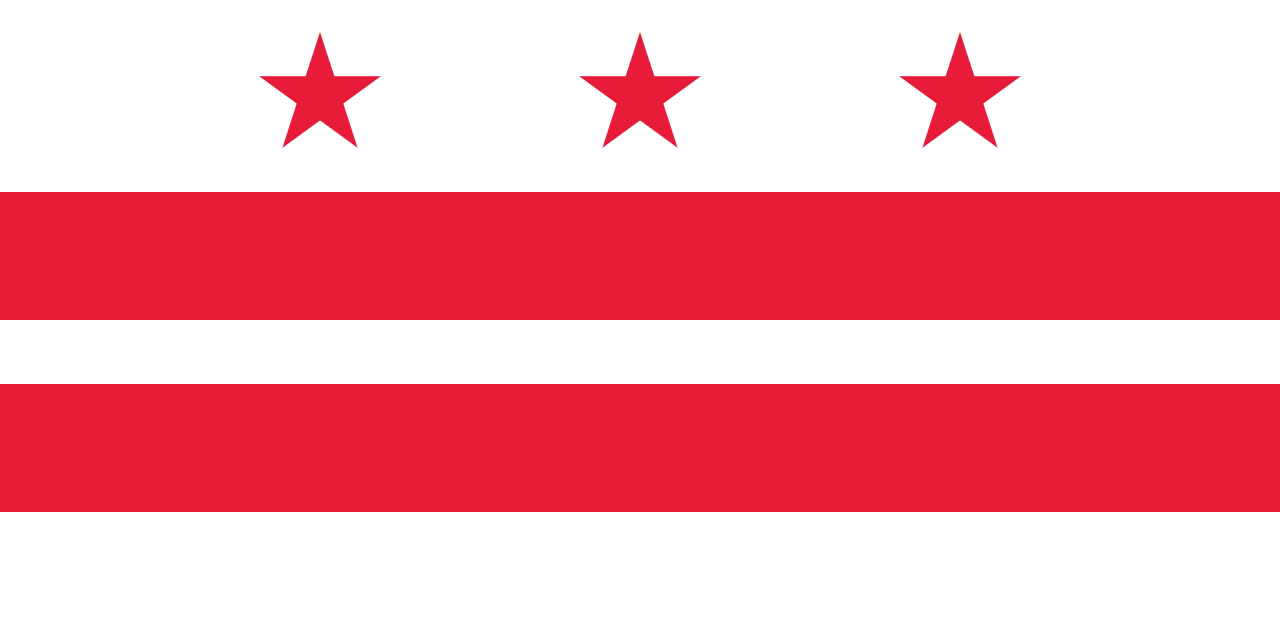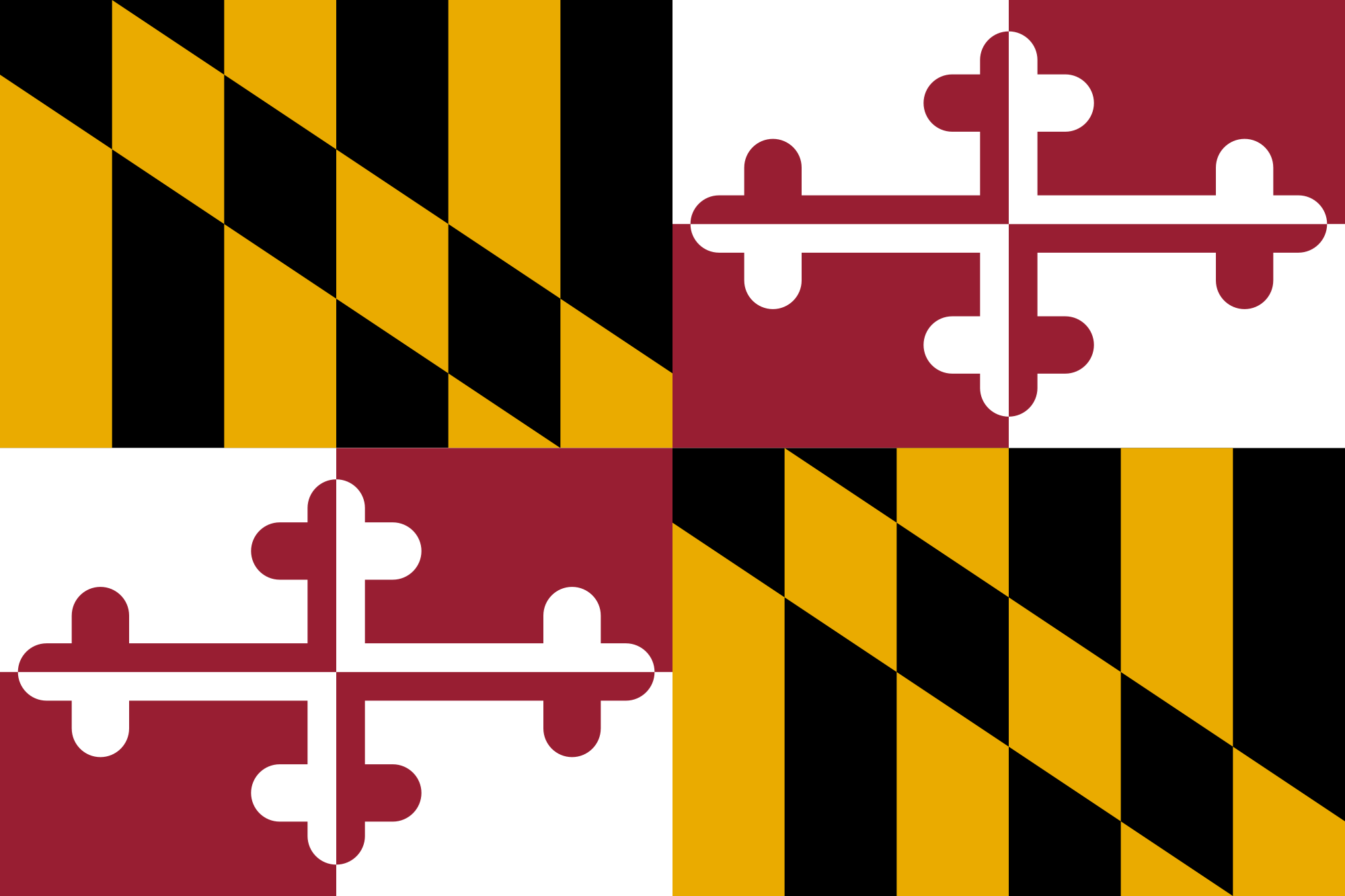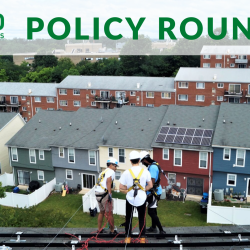Hello from GRID Alternatives Mid-Atlantic! This is the September edition of the GRID Mid-Atlantic Policy Roundup, keeping you up-to-date on renewable energy policy in the Mid-Atlantic region and beyond.
This month's edition features very promising updates nationwide and in Virginia that aim to make clean energy available to all, including low-income communities and communities of color.
You can receive this monthly roundup in your inbox by going to our newsletter signup page and selecting "Advocacy/Policy Updates" under "Newsletter Subscription Preferences."
*
DISTRICT OF COLUMBIA
GRID Mid-Atlantic supports new rules for CREFs to promote equity
The issue of community renewable energy facilities (CREFs) was discussed during MDV-SEIA's DC Committee meeting in August. New CREF rules, which have been initialized by MDV-SEIA, would socialize at least some costs for certain upgrades needed for community solar interconnections. Many CREFs, especially ones needing any upgrades, serve lower-income parts of the city, which means that a stronger focus on equity could reinforce the benefits for low- to moderate-income subscribers. GRID Mid-Atlantic is hoping these rules will be resolved quickly so that they can be included in the Solar For All program in 2020.
Report: Humidity in Washington, D.C. has increased 10% since 1970
Data collected by the Washington Post indicates that in D.C., climate change has increased humidity by as much as 10% since 1970. This is a major health issue for underserved communities, which are less equipped to deal with rising temperatures.
"Heat is a silent killer,” wrote the Post, “particularly dangerous to vulnerable low-income populations and older adults who may not be able to afford air conditioning." This hyperlocal crisis underscores the importance of no-cost solar energy resources in those communities, as solar promotes cleaner air and lowers utility bills.
DOEE's #DCSolarStories series shows benefits, implementation of Solar for All
The Department of Energy and Environment’s #DCSolarStories series, which features GRID Mid-Atlantic, premiered on Instagram TV on September 5. The series highlights the various approaches that grantees within the Solar For All program are taking to increase the District’s solar energy capacity. Solar For All aims to bring the benefits of solar energy to 100,000 low to moderate income families in the District of Columbia by 2030.

VIRGINIA
Virginia governor issues Executive Order 43, requiring 100% electricity from carbon-free sources by 2050
GRID Mid-Atlantic commends Virginia's governor for issuing an Executive Order expanding access to clean energy and growing the clean energy careers of the future in Virginia. Executive Order 43 directs agencies of the Commonwealth to develop a plan of action to produce 30 percent of Virginia’s electricity from renewable energy sources by 2030 and 100% from carbon-free sources by 2050, while addressing issues related to equity and environmental justice. The Order also requires the development of an energy workforce plan, with "specific recommendations for creating pathways out of poverty through careers in renewable energy and energy efficiency."
“GRID Alternatives Mid-Atlantic applauds this vision for an equitable transition of Virginia's energy system towards clean, renewable energy,” GRID Mid-Atlantic Executive Director Nicole Steele said. “The Governor has set forth a bold plan for an energy future that includes everyone. This is exactly what we need today — action that lifts up our frontline communities and communities of color.”
Dominion Energy moving forward with low-income solar and energy efficiency program
Dominion Energy intends to submit a filing to the State Corporation Commission in the coming weeks about its low-income energy efficiency and solar program. The statute passed earlier this year requires that participants in the energy efficiency program be allowed to participate in the solar program. Dominion is considering the incentives it will include for net-metered solar.

MARYLAND
Montgomery County residents call Climate Emergency Town Hall
Hundreds of activists were present on Sept. 14 at a Montgomery County Climate Emergency Town Hall in Silver Spring. The activists were concerned that not enough action has been taken to meet the county’s goals to reduce greenhouse gas emissions by 80% by 2027 and 100% by 2035.
According to Bethesda Magazine, County Executive Marc Elrich responded to the concerns by saying he planned to introduce legislation requiring all new houses and townhouses by a certain date to have solar roofs by 2022. He added that the county has also looked into testing electric-powered school buses. GRID Alternatives Policy and Regulatory Manager Alexandra Wyatt is taking an active role in finding solutions as a participant on Montgomery County’s energy task force pursuing new and inclusive energy goals.
Maryland governor creates task force on solar, wind sites
Maryland Governor Larry Hogan signed an executive order on Aug. 15 establishing the Governor’s Task Force on Renewable Energy Development and Siting. The task force will “encourage the responsible siting of clean and renewable energy projects in Maryland,” possibly inspired by the state’s decision to block the creation of a Georgetown University solar farm that would have required razing around 210 acres of forest.
To jump-start the creation of new solar projects, Gov. Hogan also pledged an additional $4 million to large public institutions to deploy solar on existing infrastructure. Hogan’s support of solar is evidence that bipartisan support is growing for solar and clean energy growth — earlier this year, Conservatives for Clean Energy found that 77% of voters in North Carolina (including 66% of Republicans) “believe solar and wind energy represent technological advances in energy production and should be expanded.”

NATIONAL
Sen. Duckworth (IL) and Rep. McEachin (VA) introduce bill to make solar more accessible for low-income families
In a major win for making solar available to all, Sen. Tammy Duckworth (IL), along with Sen. Cory Booker (NJ), introduced and announced her Low Income Solar Energy Act on Sept. 18. GRID Alternatives and GRID Mid-Atlantic worked closely with Senator Duckworth’s office on this bill, as it closely aligns with our vision of a renewable energy future that includes everybody. The bill would expand the Low Income Housing Energy Assistance Program, direct the U.S. Department of Energy to create new financing programs, and provide Section 8 homeowners interest-free loans, among other initiatives.
“Senator Duckworth's proposed low-income solar legislation would be a major step toward reducing the energy burden for low-income families and affordable housing residents throughout the country," said Stan Greschner, chief policy and business development officer with GRID Alternatives. "This legislation builds off of many successful state programs that expand access to clean energy through solar and ensures careers in the growing clean energy economy are accessible to all through workforce development.”
Rep. Donald McEachin of Virginia was one of four representatives to sponsor a companion bill in the House. The solar industry employs nearly 4,000 people and provides enough energy to power 87,000 homes in Virginia.
National green bank could mobilize up to $1 trillion in clean energy investment
A Democratic proposal in the Senate for a national green bank got a bit of a boost thanks to a recent study by the Coalition for Green Capital, which said a national green bank could mobilize up to $1 trillion of investment over 30 years with just $35 billion of federal funds. The Senate bill defined the purpose of the Bank as "enabling low- and moderate-income individuals and communities to benefit from and afford projects and investments that reduce emissions." The bank would also require projects to include facilitating investment and procurement in low- to moderate-income communities and communities of color.

